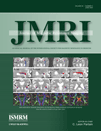Division scheme optimization for the molecular evaluation of the intervertebral disc by gadolinium-enhanced MRI
Abstract
Purpose
To evaluate the effects of reducing the number of segments in which the intervertebral disc (IVD) can be subdivided on the accuracy in estimating its sGAG content by computation of the parameter ΔT1 from delayed Gadolinium-Enhanced MRI of Cartilage (dGEMRIC) protocol.
Materials and Methods
Twenty-three herniectomy patients underwent dGEMRIC acquisitions for IVD. Thirty-one tissue samples were obtained at herniectomy from the same patients and biochemically analysed for their sGAG content. Eleven different division schemes (DS) were applied by processing dGEMRIC images, and ΔT1 values of the segments related to the surgical sampling locations were computed and correlated to the corresponding biochemical data. For each DS, the linear regression and Pearson's coefficient were computed.
Results
Reducing the number of segments from 48 (4 annular rings and 12 angular sectors) to 12 (2 rings and 6 sectors), correlation with sGAG biochemical data did not decline (r > 0.7).
Conclusion
A 12-segment DS provided the best compromise between preserving accuracy and reducing the number of segments. J. Magn. Reson. Imaging 2009;29:1443–1449. © 2009 Wiley-Liss, Inc.




